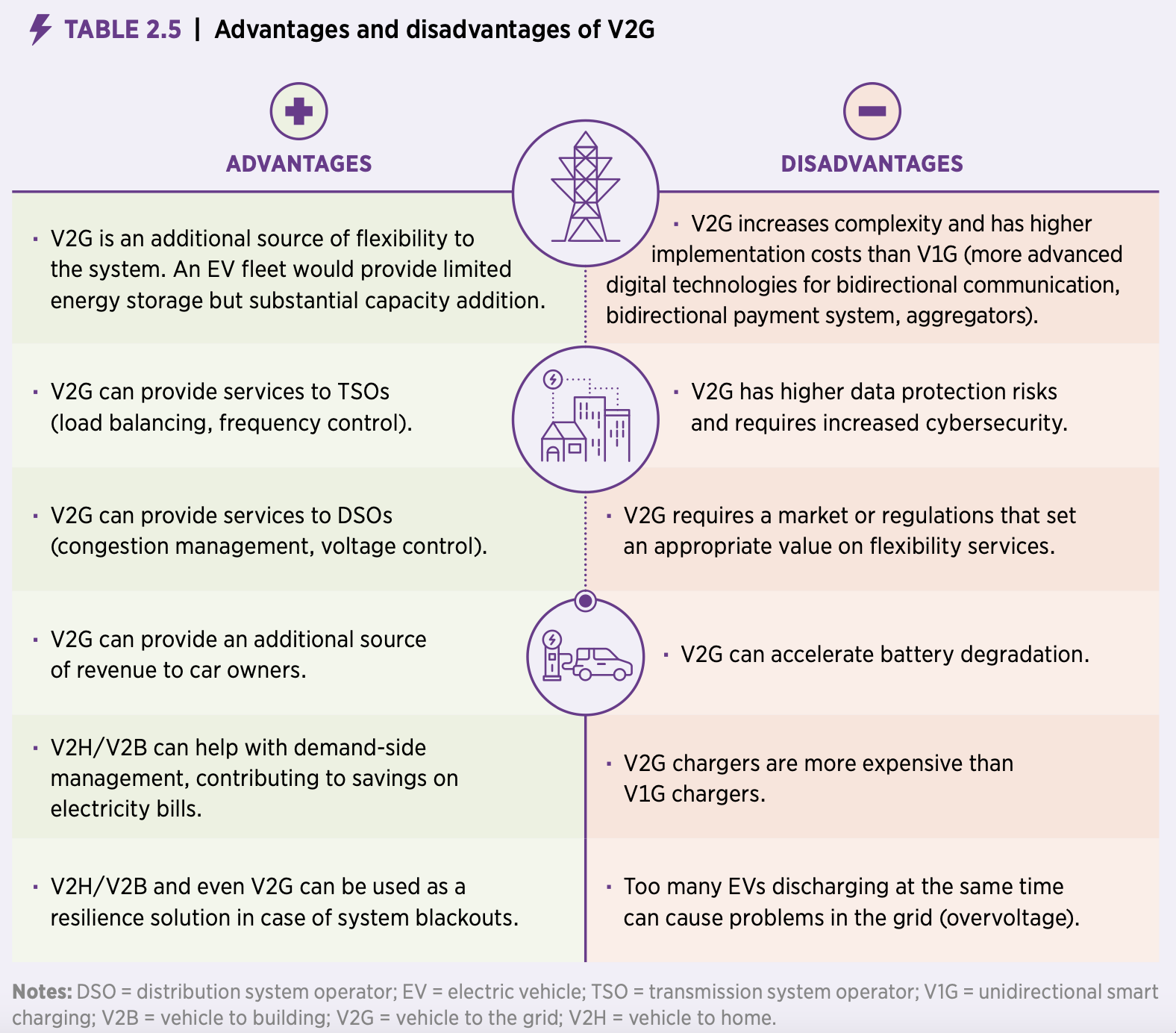Advantages and Challenges of V2G Implementation
V2G technology enables bidirectional energy flow between EVs and the power grid. It allows plugged-in EVs not only to draw energy from the grid but also to feed surplus energy back into it. This bidirectional charging capability transforms EVs into valuable energy storage resources, unlocking numerous advantages.
Advantages of V2G Implementation
- Flexibility and Capacity: V2G adds an additional source of flexibility to the power system. While an EV fleet offers limited energy storage capacity, it significantly contributes to overall capacity addition.
- Grid Support: V2G allows EVs to provide essential services to Transmission System Operators (TSOs) and Distribution System Operators (DSOs). These services include load balancing, frequency control, congestion management, and voltage control, all of which help enhance grid stability and efficiency.
- Revenue Source: V2G can create an additional source of revenue for EV owners. By selling surplus energy back to the grid during peak demand periods, EV owners can receive compensation for their contributions to the power system.
- Demand-Side Management: V2G can be utilized in Vehicle-to-Home (V2H) and Vehicle-to-Building (V2B) setups to manage demand effectively. Consumers can use their EVs to power their homes or buildings during peak hours, leading to potential savings on electricity bills.
- Resilience Solution: In case of power outages, V2H/V2B and even V2G systems can serve as a reliable resilience solution, providing backup power when needed.
Challenges of V2G Implementation
- Implementation Costs: V2G technology requires more complex and costly bidirectional chargers, communication systems, and payment methods. This initial investment can be a barrier to widespread adoption.
- Data Protection and Cybersecurity: The implementation of V2G introduces higher data protection risks and necessitates increased cybersecurity measures to safeguard the grid and users’ privacy.
- Valuation of Flexibility Services: Establishing appropriate value and compensation for the flexibility services offered by V2G remains a challenge. This is crucial to incentivize EV owners to participate in V2G programs.
- Battery Degradation: The additional charging and discharging cycles in V2G systems can potentially accelerate battery degradation and shorten battery lifespans. However, this can be mitigated with improved battery control systems.
- Grid Overloading: If too many EV owners simultaneously discharge their batteries during periods of high electricity prices, it could cause grid voltage problems and lead to grid instability.
Conclusion
Smart charging strategies, particularly V2G implementation, play a vital role in ensuring the successful integration of electric vehicles into the power system. While V2G presents numerous advantages, it also comes with challenges that need to be carefully addressed. The decision to include V2G charging in a specific location or project should be based on a thorough assessment of its benefits against the associated costs and existing flexibility sources. Nonetheless, V2H/V2B setups may still offer significant advantages for consumers in terms of demand-side management and resilience solutions. As technology and regulations evolve, smart charging strategies will continue to evolve, paving the way for a greener and more sustainable transportation future.
Source: Innovation landscape for smart electrification | Irena





